Just Add Citizen Science
We need an all-hands-on-deck approach to scientific research. Citizen science offers multiple opportunities for public participation. To support science and the public, SciStarter provides on-ramps to discover and connect with research projects that you can contribute to anytime, any where. We hope this snapshot, below, provides a useful way to survey the landscape and diversity of projects and to find a way to participate. These projects are ideal to introduce people to citizen science at events including Science Festivals, STEM events at schools, museums, zoos, aquariums and libraries, and the March for Science 2018, one of hundreds of events scheduled to take place on Citizen Science Day April 14.
You can find thousands of citizen science projects on SciStarter's Project Finder. Create an account to track and earn credit for your contributions to citizen science on your personalized dashboard.
You’ll find these projects perfect for participation while ON THE GO!
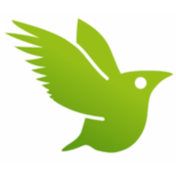 iNaturalist (California Academy of Sciences)
iNaturalist (California Academy of Sciences)
While taking a break on a park bench or walking around, you are likely to see many signs of nature. Why not help scientists and resource managers understand when and where organisms occur. There’s an app for that!
Goal: To empower citizens to record biodiversity.
Task: Register for iNaturalist and download the app to take pictures of any plants and animals that you see. Don’t know what the species is? Connect with experts who can identify the organisms you observe. Affiliate your SciStarter and iNaturalist accounts as directed.
It’s easy to contribute to this socially networked weather Almanac. Observations are mapped to near-real time climate information and distributed through public radio.
Goal: Discover how climate change impacts daily life.
Task: Download the iSeeChange app (https://itunes.apple.com/us/app/iseechange-tracker/id1114885557?mt=8) from iTunes and share your observations.
 Lingscape – Linguistic Landscaping (University of Luxembourg)
Lingscape – Linguistic Landscaping (University of Luxembourg)
This is a great opportunity to archive and crowdsource data about public signs.
Goal: Document and analyze cultural diversity in public signage
Task: Collect photos of public signs and lettering while you march. Download the app: Google Play link: http://tinyurl.com/jts3453 Apple Appstore link: http://tinyurl.com/hdn5rw6
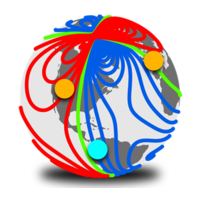 CrowdMag (National Oceanic and Atmospheric Administration-NOAA)
CrowdMag (National Oceanic and Atmospheric Administration-NOAA)
NOAA researchers have two long-term goals for CrowdMag: 1) Create near-real-time models of Earth's time changing magnetic field by combining crowdsourced magnetic data with real-time solar wind data. and 2) Map local magnetic noise sources (for e.g. power transformer and iron pipes) to improve accuracy of the magnetic navigation systems.
Goal: To explore whether digital magnetometers built in modern mobile smartphones can be used as scientific instruments
Task: Install CrowdMag app (iOS or Android with GPS and magnetometers (compass)) and enable background recording
 NASA GLOBE Observer: Clouds (National Aeronautics and Space Administration)
NASA GLOBE Observer: Clouds (National Aeronautics and Space Administration)
This is one of several projects in need of help from the public to ground-truth satellite data. In this case, NASA seeks help ground-truthing satellite data about clouds and weather.
Goal: Photograph clouds, record sky observations and compare them with NASA satellite images to help scientists understand the sky from above and below.
Task: Download the app (https://itunes.apple.com/us/app/globe-observer/id1090456751?mt=8) and simply follow the prompts in the app to make observations. Be sure to add "SciStarter" in the referral field to earn credit. The app has a feature that will tell you when certain low-Earth orbiting satellites that especially study clouds are passing over your location.
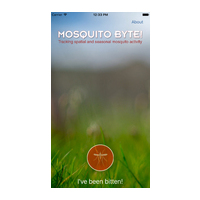 Mosquito Byte (North Carolina State University)
Mosquito Byte (North Carolina State University)
It’s April so there will likely be lots of biting insects out and about. Got bit by a mosquito? Report it through this app to track mosquito biting activity.
Goal: Track mosquito biting activity in space and time globally
Task: Download the Mosquito Byte! app (iOS and Android: https://itunes.apple.com/us/app/mosquito-byte!/id1039874024?mt=8) and record if you’ve been bitten.
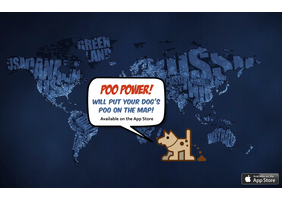 Poo Power! Global Challenge (GreenNation, Anthrozoology Research Group)
Poo Power! Global Challenge (GreenNation, Anthrozoology Research Group)
Ever get frustrated when you see that someone has not picked up after their dog? How might this dog waste be contributing to urban pollution? Be part of the solution.
Goal: Map dog waste “hotspots” to improve sustainability.
Task: Download the App (iOS only) and map areas that are dog poo “hotspots” on your march.
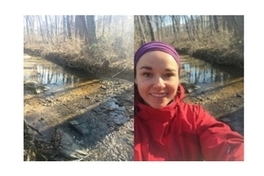 Stream Selfie! (Izaak Walton League of America)
Stream Selfie! (Izaak Walton League of America)
What's in YOUR water? We all have the right to know if the streams running through our backyards and neighborhood parks are safe. But there is an alarming lack of up-to-date information about water quality across the country. Stream Selfie is here to bridge that information gap. Stream Selfie connects you with thousands of other citizen scientists to paint a picture of streams across America. Simply snap a pic of your local stream and share it here. Your photo is step one in our effort to check the health of every stream in the country – far more streams than state and local agencies have the resources to check!
Goal: Map streams across the country and start testing the waters.
Task: Simply snap a pic of your local stream and share it here: https://scistarter.com/project/16864-Stream-Selfie
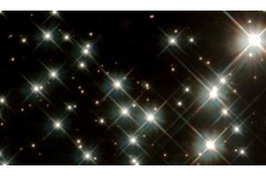 Globe at Night (NOAO) and the Dark Sky Meter
Globe at Night (NOAO) and the Dark Sky Meter
Light pollution is a growing problem in urban environments, but now you can help scientists better understand its effects on the environment. By utilizing the camera built in to your iPhone, the Dark Sky Meter actually measures ‘skyglow’ and updates the data in real time.
Goal: Help scientists measure, understand effects of light pollution.
Task: Download the Dark Sky Meter app (iOS only; $1 US) and use the camera of your phone to measure “skyglow” in real time. https://itunes.apple.com/app/dark-sky-meter/id602989060?ls=1&mt=8
 Noise Map (The Open University, UK)
Noise Map (The Open University, UK)
There are many opportunities to capture data on noise levels throughout the day.
Goal: Map your surrounding noise.
Task: Visit www.nquire-it.org/#/project/2, download and log in to the Sense-it app (Android only), and join the Noise Map project. You can record and look at patterns of noise throughout the day with your booth visitors.
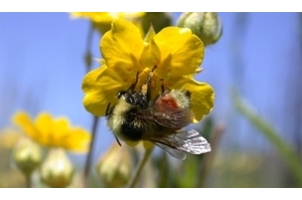 Bumble Bee Watch (Xerces Society, Wildlife Preservation Canada, University of Ottawa, Montreal Insectarium, York University, BeeSpotter, Natural History Museum in London)
Bumble Bee Watch (Xerces Society, Wildlife Preservation Canada, University of Ottawa, Montreal Insectarium, York University, BeeSpotter, Natural History Museum in London)
Concerned about the loss of our pollinators or are you just fond of bess? You can help scientists better understand bumble bee distributions around the world.
Goal: Help track North America’s bumble bees.
Task: Take pictures of bumble bees on your march and submit it to BumbleBeeWatch.org.
Organizing events? You can engage your community in science through these accessible projects, too. Here’s some projects to get you started.
 MIT Climate CoLab (Massachusetts Institute of Technology)
MIT Climate CoLab (Massachusetts Institute of Technology)
Great ideas can come from anyone and this project provides a wonderful way to move those great ideas forward using the collective power of many minds.
Goal: To crowdsource ideas on how to address climate change.
Task: Invite participants to suggest, vote on, and contribute to proposals to improve the planet. Use your website and social media to get participants engaged in this project.
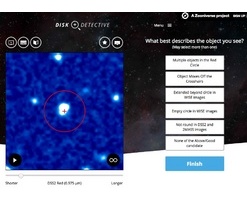 Disk Detective (NASA and Zooniverse)
Disk Detective (NASA and Zooniverse)
This project, and others on the Zooniverse, provide a great opportunity to do science from home.
Goal: help to discover the birthplace of planets in never-before seen data!
Task: Use your website and social media to get participants engaged in this project. They will go to diskdetective.org, take a short tutorial and can then start classifying disk candidates. This project is looking at stars to find dusty debris disks, similar to our asteroid field. Participants can do as many classifications as they would like.
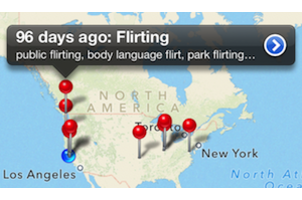 Kinsey Reporter (The Kinsey Institute)
Kinsey Reporter (The Kinsey Institute)
When people think about citizen science, they tend to think about its role in the natural sciences but not necessarily the social sciences. This project is looking at new ways to study human behavior with crowdsourcing.
Goal: Exploring ways to study behavior while protecting identities.
Task: Use your website and social media to get participants engaged in the project. They will need to download the app (iOS or Android) to share, explore, and visualize anonymous data about sexual behavior.
Sponsoring or organizing an exhibit booth? Try these projects that offer science engagement and support educational experiences for your visitors.
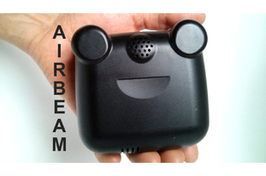 AirCasting (HabitatMap)
AirCasting (HabitatMap)
AirCasting is an open-source, end-to-end solution for collecting, displaying, and sharing health and environmental data using your smartphone. The $249 platform consists of wearable sensors that detect changes in your environment and physiology, including a palm-sized air quality monitor called the AirBeam, the AirCasting Android app, the AirCasting website, and wearable LED accessories.
Goal: Crowdsource air quality data.
Task: Record and share air quality measurements. Purchase the kit: https://scistarter.com/store
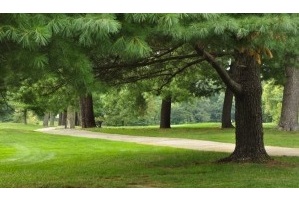 OpenTreeMap (United States Department of Agriculture)
OpenTreeMap (United States Department of Agriculture)
Urban forests provide many benefits to communities. Through this project, booth organizers can send visitors to different areas of the city to map trees. These observations can then be used to calculate ecosystem services and conduct urban forestry analyses, providing a great way to engage visitors. Members of the public can search existing tree data by species and other search filters, add new trees, edit tree data, upload images, or leave comments. OpenTreeMap uses the i-Tree software developed by the US Forest Service to calculate and display the ecosystem benefits generated by urban trees.
Goal: Gather tree data and show their ecobenefits.
Task: Check to see if there is a tree map in your march location at www.opentreemap.org or through the OpenTreeMap App (iOS and Android).
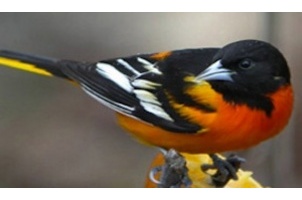 Celebrate Urban Birds (The Cornell Lab of Ornithology)
Celebrate Urban Birds (The Cornell Lab of Ornithology)
Spring is also a great time to observe and track urban birds!
Goal: Help ornithologists learn about 16 key species of urban birds.
Task: Sign up to participate for free at http://www.birds.cornell.edu/celebration/register-for-celebrate-urban-birds/. With your booth visitors, you can watch an area for these 16 species for 10 minutes. The online project provides all the materials to get you started for a successful day.
Whether you are already a citizen science enthusiast or wanting to learn more, we invite you to participate in the growing movement. You can always find multiple ways to participate in projects and events by visiting SciStarter. And check out the Citizen Science Association , a newly formed professional association for the field of citizen science.
Special thanks to Alyica Crall, co-managing editor of SciStarter, for putting this list together.

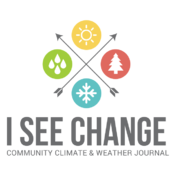 iSeeChange
iSeeChange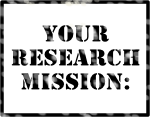
Or Sign Up with…